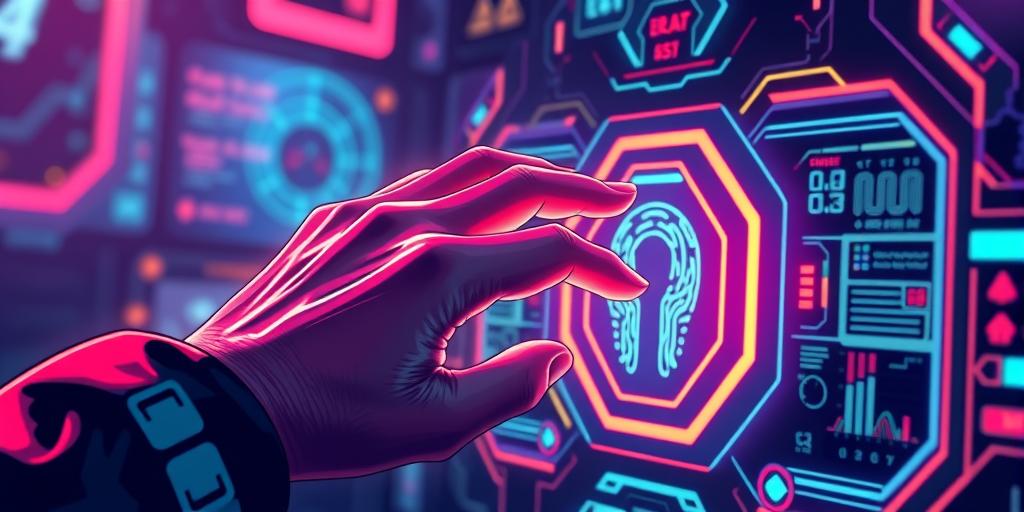Are you tired of endless passwords? Do you dream of a world without the constant frustration of forgotten logins and security breaches? The future of authentication may be closer than you think, with biometrics poised to revolutionize how we access our digital lives. But can biometrics truly replace passwords entirely, or are there still hurdles to overcome? Let’s dive into the exciting possibilities and persistent challenges of a passwordless future.
The Allure of Biometric Authentication
Biometric authentication offers a compelling alternative to traditional passwords. Instead of relying on easily guessable or crackable combinations of letters and numbers, biometrics use unique physical or behavioral characteristics for verification. This includes fingerprints, facial recognition, iris scans, voice recognition, and even gait analysis. The inherent uniqueness of these traits makes them significantly more secure than passwords. Think about it – you can’t easily lose or forget your fingerprint! This inherent security offers a significant advantage in thwarting cyberattacks, reducing the risk of data breaches, and enhancing overall security. The convenience factor is another significant plus. Imagine a world where you simply glance at your phone to unlock it, or use your fingerprint to access secure online accounts. This speed and ease of use are significantly more convenient than having to remember and type complex passwords. This increased convenience benefits both consumers and businesses and contributes to a seamless user experience. However, there is a delicate balance to strike between convenience and privacy.
Biometric Technology’s Advancements
The technology behind biometric authentication is constantly evolving, becoming more sophisticated and accurate with each passing year. Improvements in algorithms and sensor technology mean more reliable and secure identification. The widespread adoption of smartphones with integrated biometric sensors has further accelerated this progress. This means that the potential for a widespread shift toward biometric authentication in the coming years is very real.
Enhancing Security Beyond Passwords
While passwords offer a layer of security, they are vulnerable to phishing scams, brute-force attacks, and keyloggers. Biometric systems, particularly those incorporating multiple factors of authentication, are far more resistant to such attacks. This multi-factor authentication approach involves combining biometric data with other security measures. For example, a user might need to scan their fingerprint and enter a one-time code sent to their phone. This layered approach provides a more robust and reliable means of verifying identity, making it exceptionally difficult for unauthorized access.
The Persistent Challenges of a Passwordless World
Despite the advantages of biometrics, several obstacles remain before passwords can be completely replaced. One of the biggest challenges is the issue of accuracy and reliability. While technology has improved significantly, biometric systems are not foolproof. Errors can occur, leading to false acceptance or rejection. This can be especially frustrating for users and poses problems for applications such as high-security access control systems. Furthermore, the accuracy and reliability of biometric systems can vary depending on a number of factors, such as the quality of the sensor, the environmental conditions, and the individual’s physical characteristics. The use of biometric data also raises concerns about privacy and data security. Storing and protecting biometric data requires robust security measures to prevent unauthorized access or misuse. Data breaches involving biometric data could have severe consequences, as this data is inherently sensitive and irreplaceable. Regulations and standards are needed to ensure ethical and secure handling of biometric information. This involves striking a balance between security needs and users’ privacy rights.
Privacy and Security Concerns
The collection and storage of biometric data raise significant privacy concerns. Who has access to this data? How is it protected from unauthorized access? These are crucial questions that need to be addressed before widespread adoption of biometric systems is truly possible. Furthermore, the potential for misuse of biometric data for surveillance or identity theft must be carefully considered and mitigated.
The Cost Factor
Implementing and maintaining biometric systems can be expensive. This cost barrier can be a significant obstacle, particularly for smaller organizations and businesses. The cost of the hardware, software, and the ongoing maintenance and updates must be taken into consideration. Therefore, it needs to be affordable to be adopted widely.
Biometrics: A Part of a Broader Solution
Ultimately, a complete shift away from passwords towards biometrics may not be the most realistic path forward. A more likely scenario is the integration of biometrics into a multi-layered security approach. This means that biometrics can play a vital role alongside other security measures, such as password managers, two-factor authentication, and advanced threat detection systems. This combination provides a more comprehensive and resilient security system, effectively mitigating the risks associated with relying solely on any single authentication method. This approach combines the benefits of biometrics with other established security measures to create a robust security system capable of addressing the current vulnerabilities.
The Future of Authentication
The future of authentication is likely to be multi-faceted, incorporating a combination of technologies and approaches. Biometrics will undoubtedly play an increasingly significant role, but they will not entirely replace passwords. Instead, they will work in conjunction with other security measures to provide a more comprehensive and secure authentication system. This combination will offer a seamless and secure user experience, meeting the demands of the increasingly digital world.
Ready to embrace the future of secure access? Learn more about biometric authentication and its role in enhancing online security!




